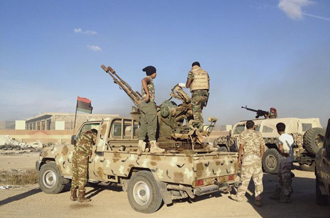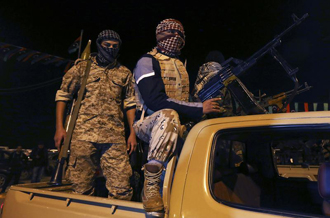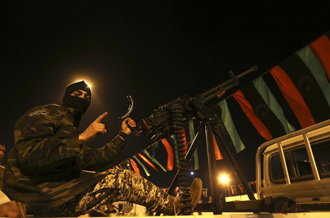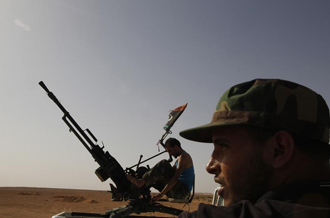Mapping Libya’s armed groups
As fighting escalates in Libya, Al Jazeera takes a closer look at the major armed groups.

Tripoli, Libya – The attacks on Libya’s parliament by forces of retired general Khalifa Haftar have seen Libya’s myriad armed groups split in battles that some fear are tipping the country into civil war.
Haftar launched his operation on May 16, targeting Islamist militias in the eastern city of Benghazi and storming the General National Congress in the capital, Tripoli, in fighting that has left at least 72 dead.
Haftar accuses Congress of allowing “terrorists” to flourish in Libya and has vowed to “wipe them out”, gaining support from much of the regular armed forces and nationalist militias. Other militias have lined up to oppose him, insisting his attacks amount to a “coup”.
Neighbouring countries are closing their borders and the US is readying its forces for a possible evacuation of its embassy, while diplomats and the UN have urged all sides to engage in peaceful dialogue.
Haftar insists he is not aiming for a military takeover, but an operation to “restore Libya’s dignity” and wants Congress abolished and a temporary government to rule until elections which are scheduled for June 25.
The fighting has seen an array of forces lining up on opposing sides, underlining the splintered divisions of Libya three years after its “Arab Spring” uprising.
Al Jazeera takes a closer look at Libya’s major armed groups.
| Pro-Hiftar armed groups |
 |
| [Reuters] |
1. National Army
Despite its name, the National Army is a nationalist armed group controlled by Khalifa Haftar, rather than Libya’s national army.
It can trace its roots to exiles trained in Chad by the US to fight against Gaddafi in the 1980s.
The group later moved to the US and dispersed, but re-formed to help fight in the uprising against Gaddafi in 2011.
It is composed of non-Islamist fighters and former soldiers and its numbers have swelled in the past week.
Haftar used it to launch Operation Libyan Dignity on May 16, saying his mission was to dissolve the General National Congress, which he labelled Islamist, and to destroy “terrorists” he said Congress had allowed to establish bases in Libya.
2. Regular forces
Libya’s small army and air force have mostly defected to Haftar. Libya’s armed forces fought on both Gaddafi and the rebel side in the 2011 uprising. Since then, the army has been rebuilding, with most of its units in training.
The main army units are in east Libya, spearheaded by Saiqua, or thunderbolt, special forces brigade, which has been fighting a tit-for-tat battle against Islamist militias for more than a year.
Army officers accuse Congress of diverting funding from regular forces to Islamist militias, a complaint that has made them sympathetic to Haftar.
The defection of the air force has given Haftar the key to success, with bombers launching air strikes on Islamist militias in Benghazi.
 |
| [Reuters] |
3. Zintan
Zintan’s militias are the second most powerful armed force in Libya, after Misrata, and based in the Nafusa mountains 144km southwest of Tripoli.
Zintan formed one of the three fronts in the uprising and by the end of that uprising, Zintan brigades surged into Tripoli, with several maintaining bases in the city and holding the international airport.
They have frequently clashed with other city militias and regard themselves as opponents of both Congress and Islamists.
On May 18, two days after Hiftar’s forces attacked Benghazi, two Zintan militias stormed the national congress building in Tripoli.
They have since established positions across much of southwest Tripoli, equipped with artillery and armoured cars. Unlike many other militias, Zintanis wear army-style uniforms which are often indistinguishable from regular forces.
| Pro-Congress armed groups |
 |
| [Reuters] |
1. LROR
The Libyan Revolutionary Operations Room was formed in 2013 as the headquarters of the Libya Shield, an alliance of pro-Congress militias.
It is accused by opponents of being Islamist, and characterises itself as revolutionary, seeing its purpose as safeguarding the gains of the 2011 uprising.
LROR led a powerful Shield force to Tripoli last year to defend Congress.
Last October, LROR units briefly kidnapped former prime minister Ali Zaidan.
It has pledged to defend Congress against Haftar’s attacks and guards the Radisson Hotel to which the parliament has moved.
Hours after the air force declared its affiliation with Hiftar, LROR launched rockets at Tripoli’s air force headquarters.
With strong affiliations with the Muslim Brotherhood’s Justice and Construction Party, LROR will have much to lose if Haftar takes power.
2. Ansar al-Sharia
Based in eastern Libya and dedicated to establishing a caliphate in Libya, it differs from Libya Shield in refusing to recognise the constitutional government, issuing a statement opposing Haftar and democracy this week.
The US blamed Ansar al-Sharia for the assault on the US consulate in Benghazi that saw the death of Ambassador Chris Stevens in 2012.
Since then, it has grown in strength in Benghazi, operating social and education programmes in addition to its armed wing and running a clinic to treat black magic. Its units have been battling with regular army units for many months.
Ansar al-Sharia has born the brunt of attacks by pro-Haftar forces this past week, but insists it will fight back, as skirmishes continue in Benghazi.
 |
| [Reuters] |
3. Misrata
Misrata’s 235 militia brigades are collectively the most powerful single force in Libya, fighting through a six-month siege during the uprising.
They are equipped with heavy weapons, tanks and truck-launched rockets and have the power to be a decisive force in any struggle between Haftar and Islamist forces.
Many Misratan leaders back the Islamists in Congress, and Misratan brigades once formed a key part of the Libya Shield force in Tripoli.
That changed in November when one brigade opened fire on protesters outside its base in Ghargour, Tripoli, killing 42.
Misratan units were then expelled from the capital.
However, the Haftar operation has seen Misrata divided. Some brigades have deployed 20km outside Tripoli, vowing to defend Congress.
Others have stayed in Misrata, blaming all sides for Libya’s descent into anarchy and chaos and are unwilling to be sucked into a civil war.